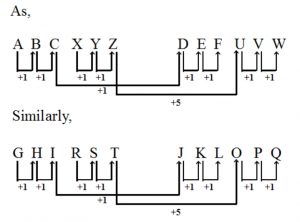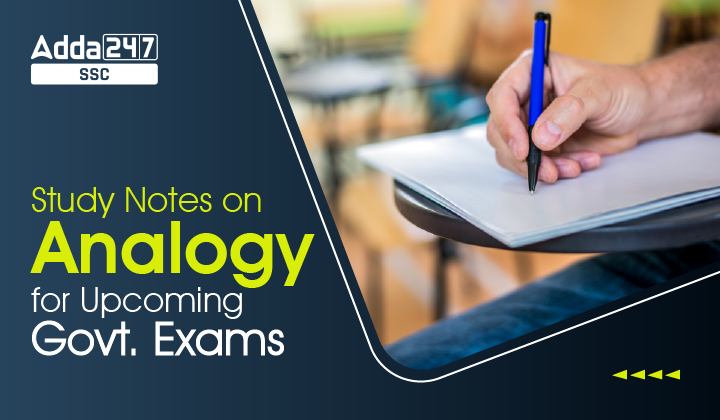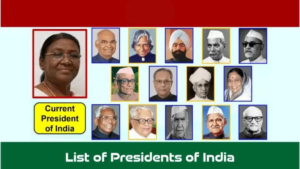Table of Contents
Analogy is an important topic that is commonly asked in various competitive exams like SSC, Railways, Banking, Defence, RBI, and Teaching. The concept of analogy revolves around finding similarities between given entities or items. When you are presented with a set of four or more items, they are related to each other in a specific way. Your task is to understand this underlying relationship. Once you’ve identified the pattern, you can then logically determine the next item that fits this relationship.
For example, if the given items are apple, orange, banana, and grape, the relationship between them is that they are all types of fruit. Therefore, the next logical item in the sequence would be something like mango, as it is another type of fruit. The key to solving analogy questions is to carefully analyze the connection between the provided items. You need to recognize the pattern or relationship, and then apply the same logic to find the missing piece. This tests your ability to think critically and identify logical patterns – skills that are highly valued in competitive exams.
Analogy
Analogy requires a logical understanding of students and a broad knowledge of every section. It observes the logical understanding and ability of candidates. The questions will be formed in analogy from any subject including General Knowledge/Awareness, Science, Computer, Environment, Current Events, Mathematics, etc. So the candidates must prepare each and every concept of Analogy well and prepare it seriously as it has the weightage of nearly 3 to 5 marks in every exam. Read the full article to know the analogy concept, the meaning of analogy, types, questions, etc.
Analogy Meaning
Analogy refers to similarity. The term ‘Analogy’ has an easy-to-understand meaning which is simply a logical relationship. The meaning of analogy is also to find the logical similarities between the given entities. The implications of the meaning of analogy can be simply understood by taking an example – Writer : Pen:: Driver: Vehicle. This means the Writer needs a pen to write in the same way the driver needs a vehicle to drive. The meaning of analogy can clearly be understood by the example discussed above that it is simply a logical relationship to relate all the terms sequentially.
Analogy Reasoning Tricks
Analogy in reasoning is a broad section that requires some useful tips and tricks to prepare for the exams. Analogy reasoning tricks help to develop the logical ability of candidates and their observation level. Here we are going to discuss some useful tips and tricks that are helpful in your preparation for exams. So follow these tips to prepare analogy well for your exams.
- Candidates must have a good understanding of the English language to solve questions related to the Analogy.
- Read the question carefully and figure out the logic followed between them and pick the correct answer following this logic.
- Candidates must have good knowledge of numbers and their operations to answer the analogy questions easily and quickly.
- Candidates must practice all types of questions asked in exams to develop their logical ability.
Analogy Types
The analogy is an important and indispensable topic of reasoning that comes under the preparation for the logical reasoning section. It has many types and the questions will be formed in the exam papers to cover all such types. The types of analogy asked in competitive exams are mentioned below.
1. Letter/Word-Based Analogy
In this type of analogy, a couple of pairs of letters or words are given and have certain fixed logical similarities between them. As per the logic followed in the first pair relationship, another pair of letters or words is also formed in which one word or letter is given and we need to find an unknown letter or word that comes there as per the logical relation following in the first pair. It contains questions based on the position of letters, opposite letters, synonyms and antonyms of words, etc. The candidates need to understand the logic followed in the first given pair and then find the next pair following the same logic. The examples of letter/word-based analogy are mentioned here.
Examples: D : F: : R:?
In D and F there is a difference of two then the unknown letter by T. Now the series will be D : F: : R: T
ABCXYZ : DEFUVW:: GHIRST?

so the answer is JKLOPQ
CUP : LIP:: BIRD:?
Cup is used to drink something with the help of lips in the same manner birds collect grass with the help of beaks to make their nest.
2. Number-Based Analogy
In this type of analogy, a pair of numbers is given which is related in a certain manner and we need to find the unknown number following the same logic followed in the given pair. The questions will be formed in a number-based analogy based on the basic mathematical operations of numbers like addition, subtraction, multiplication, and division. Apart from this, the questions are also formed based on squares and cubes of numbers, etc. The examples of number-based analogy are discussed here.
5 : 25 : : 7 : ?
5^2 = 25 then 7^2 = 49
2 : 8 : : 6 : ?
2^3 = 8 then 6^3 = 216
4 : 20 : : 8 : ?
4 × (4+1) = 20 then 8 × (8+1) = 72
3. Letters/Words and Number-Based Analogy (Mixed Analogy)
In this type of analogy, the questions will be formed on both words/letters and numbers. It is also known as a mixed analogy. The candidate first needs to understand the relation of logic by which letters or words and numbers are related to each other and follow the same logic the unknown number and letters or words need to be found. The examples of Mixed Analogy are shown here.
B2D5 : C4E25 : : F5H9 : ?
B+1 = C, 2^2 = 2, D+1 = E, 5^2 = 25
i.e. B2D5 = C4E25 then
F+1 = G, 5^2 = 25, H+1 = I, 9^2 = 81
Then, F5H9 = G25I81
4. Image-Based Analogy
In this type of analogy, figures and images are given and have certain similarities between them. The candidates need to mark the logic followed in the given pair of images and predict the new unknown image using this logic. The questions will be formed on mirror images, water images, and rotation of figures in clockwise and anti-clockwise directions. The candidates need to answer by deriving the resultant figure based on the relationship or logic followed in the given pair. The examples of image-based analogy are discussed here for a better understanding of candidates.
5. Miscellaneous Analogy
In this type of analogy, the questions will be formed on any logic or relationship. In this type, the questions are asked from any subject or section like General Knowledge, General Awareness, Current Affairs, Science and Technology, Mathematics, etc. The candidates must know all the concepts of these sections well to answer these questions. It requires more and more practice.
Force : Newton : : Current : ___
SI unit of Force is Newton similarly SI unit of Current is Ampere
India : Rupee : : Japan : ___
The currency of India is Rupee similarly currency of Japan is Yen.




 Delhi Sultanate, Notes on Dynasties of M...
Delhi Sultanate, Notes on Dynasties of M...
 States and Capitals in India, List of 28...
States and Capitals in India, List of 28...
 List of Presidents of India from 1950 to...
List of Presidents of India from 1950 to...


